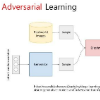Glioblastoma Multiforme (GBM) is a malignant brain cancer forming around 48% of al brain and Central Nervous System (CNS) cancers. It is estimated that annually over 13,000 deaths occur in the US due to GBM, making it crucial to have early diagnosis systems that can lead to predictable and effective treatment. The most common treatment after GBM diagnosis is chemotherapy, which works by sending rapidly dividing cells to apoptosis. However, this form of treatment is not effective when the MGMT promoter sequence is methylated, and instead leads to severe side effects decreasing patient survivability. Therefore, it is important to be able to identify the MGMT promoter methylation status through non-invasive magnetic resonance imaging (MRI) based machine learning (ML) models. This is accomplished using the Brain Tumor Segmentation (BraTS) 2021 dataset, which was recently used for an international Kaggle competition. We developed four primary models - two radiomic models and two CNN models - each solving the binary classification task with progressive improvements. We built a novel ML model termed as the Intermediate State Generator which was used to normalize the slice thicknesses of all MRI scans. With further improvements, our best model was able to achieve performance significantly ($p < 0.05$) better than the best performing Kaggle model with a 6% increase in average cross-validation accuracy. This improvement could potentially lead to a more informed choice of chemotherapy as a treatment option, prolonging lives of thousands of patients with GBM each year.
翻译:Glioblastoma 多形式(GBM)是一种恶性脑癌,大约48%的脑部和中神经系统癌症构成恶性脑癌,估计每年有超过13 000人死于GBM(GMM)癌症。据估计,每年有超过13 000人死于GBM(GMMMT)癌症。由于GBM(GBM)的早期诊断系统,必须建立能够导致可预测和有效治疗的早期诊断系统。GBM(GBM)诊断后最常见的治疗是化疗,通过将细胞迅速分解成吸附症,这种治疗形式是无效的。然而,当MMMMMM(MMMM)的推广序列序列被甲基化后,这种治疗形式将无法产生效果。我们开发了四种初级模型——两个放射细胞模型和两个CNN(CN)的跨基因模型,从而导致病人的存活能力下降。因此,必须能够通过非侵入性磁共振动性磁共振(ML)模型来确定M(ML)最佳的升级。我们用了最常态的模型来进行最常态的MBIBIG(M)升级的升级的升级,这是用来进行最高级的升级的模型,用来进行最高级的升级的升级。




